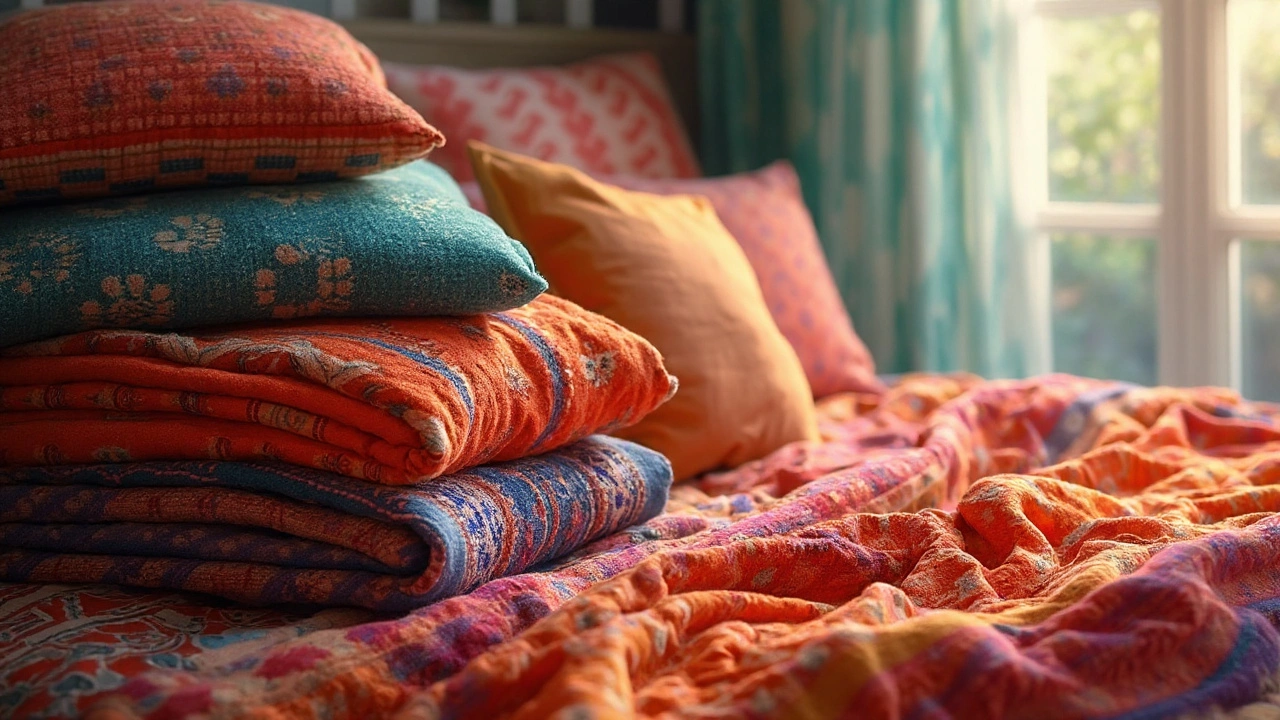
Scientific Bedding Definition: What Bedding Means in Science and Everyday Life
What does bedding really mean in a scientific sense? We break down the definition, origins, types, and fun facts you probably haven’t heard yet.
View MoreWhen talking about bedding, the collection of textiles that dress a bed – sheets, blankets, duvets, pillowcases and more – is what makes a bedroom feel finished. Also known as bed linen, bedding plays a key role in comfort, hygiene and interior style. Understanding the exact bedding meaning helps you pick pieces that suit your climate, budget, and design taste. Below we break down the most common components, explain how they differ, and share care tips that keep them looking fresh for years.
The first layer you’ll touch every night is the sheet, a flat or fitted fabric that lies directly on the mattress and provides a smooth surface for sleep. Sheets come in various weaves – percale offers crisp coolness, while sateen feels silky and warm. Cotton, linen and bamboo each bring distinct breathability and durability. Choosing the right sheet set means matching thread count to personal preference, not just chasing high numbers.
Next up is the duvet, a soft, insulated blanket usually filled with down, feathers, or synthetic fibers and encased in a removable cover. Duvets provide the bulk of warmth, and the cover can be swapped like a pillowcase, making seasonal changes easy. When selecting a duvet, look at fill power (higher means fluffier and warmer) and consider hypoallergenic synthetic fills if you have allergies.
Blankets sit between sheets and duvets in function. A blanket, a woven or knitted layer that adds extra warmth without the bulk of a full duvet, is perfect for cooler evenings or as a decorative throw. Materials range from lightweight cotton to heavyweight wool, each affecting heat retention and texture. People often layer a blanket over a sheet before adding a duvet, creating a versatile sleep system.
Beyond these three, pillowcases, mattress protectors, and decorative shams complete the set. Pillowcases protect pillows from oils and sweat, while protectors guard against spills and dust mites. Selecting fabrics that are easy to wash and resistant to pilling ensures the whole bedding ensemble stays comfortable over time.
Choosing bedding isn’t just about looks; it’s a matter of health too. Breathable fabrics like cotton and linen regulate temperature, reducing night sweats. Natural fibers also wick moisture away from the skin, which can improve sleep quality. If you suffer from allergies, look for tightly woven fabrics and hypoallergenic fills to minimize irritants.
Proper care extends the life of every piece. Wash sheets in warm water with a mild detergent, avoid fabric softeners that can coat fibers, and tumble dry on low heat. Duvet covers should be laundered every few weeks, while the duvet itself only needs professional cleaning once a year. Blankets can often be spot‑cleaned, but always follow the manufacturer’s label to prevent shrinkage.
With these definitions and tips in mind, you’re ready to navigate the world of bedding confidently. Below you’ll find articles that dive deeper into each component, compare materials, and give step‑by‑step guidance on choosing the perfect set for your home.

What does bedding really mean in a scientific sense? We break down the definition, origins, types, and fun facts you probably haven’t heard yet.
View More
Ever wondered what 'bedding' means in slang? This article breaks down its double meaning and shares how context makes a big difference. We'll separate the innocent bedroom talk from cheeky slang, show where the term pops up, and warn you about awkward moments. Get clear tips on reading between the lines so you’re never caught off guard.
View More